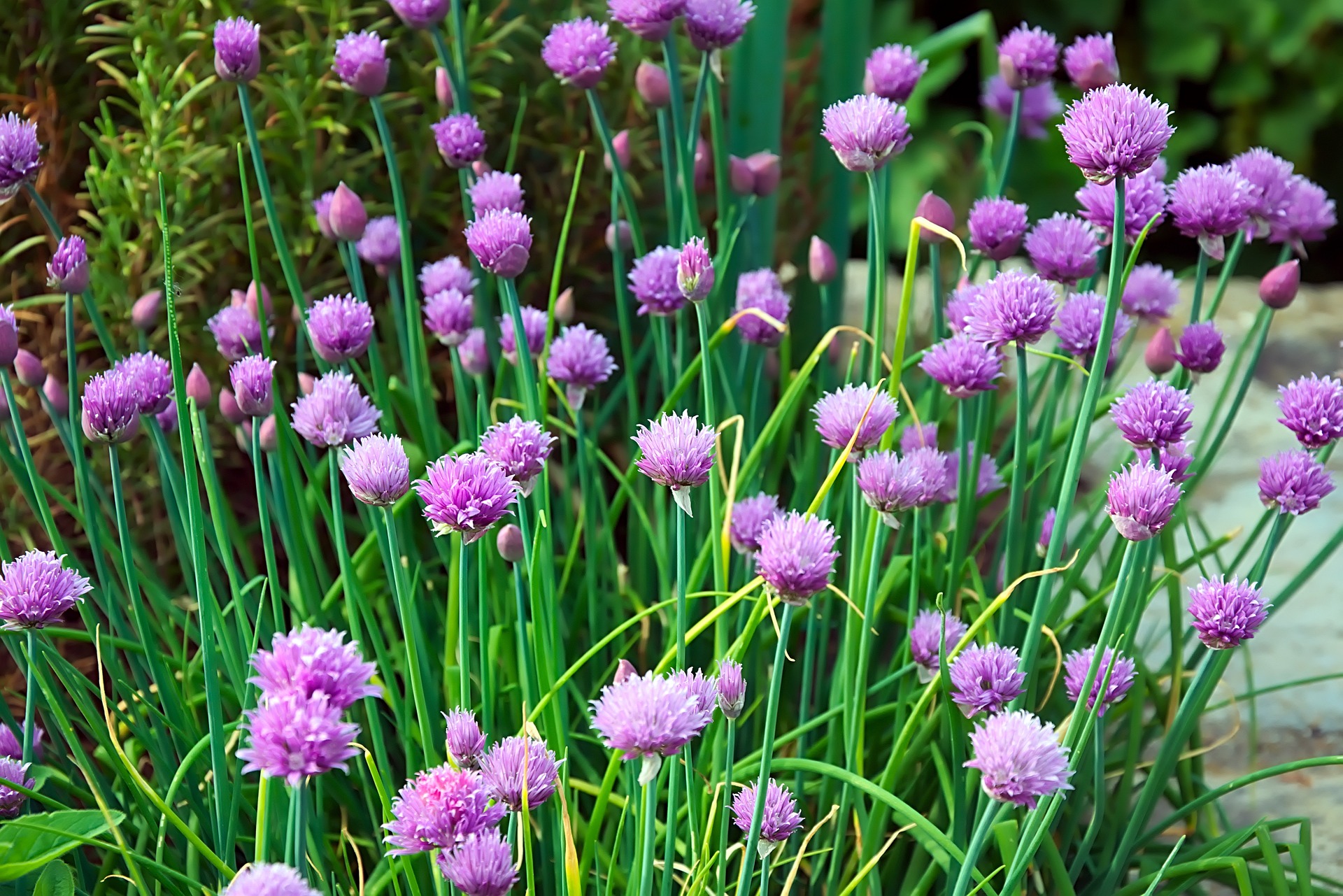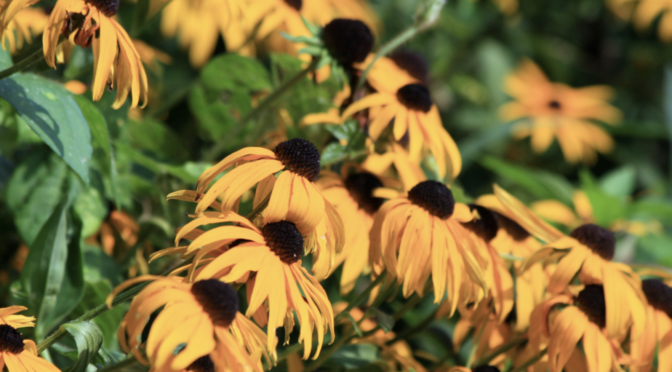As the weather is cooling off, we’re spending a lot of time pulling in the harvest, saving seeds, and sneaking in a few last-minute fall crops. It’s also an ideal time to divide perennials. Fall’s cooler temperatures and the plants’ natural transition into winter dormancy help to put less stress on your plants.
Why Divide Perennials
One of the main reasons we divide our perennials is to help them thrive. When we divide perennials, we provide more space for the roots to grow. When they’re less crowded, they can absorb more nutrients and water.
Sometimes, we divide perennials when they get out of hand in a particular space. Vigorous plants like Rudbeckia can fill a garden bed and start leaning into pathways and other beds. Dividing them is an excellent way to manage them.
Lastly, dividing perennials means we get more plants! We can share our divisions with friends and neighbors or add them to our gardens. In ornamental gardens, repetition is often a key design element, and dividing perennials is an affordable way to achieve this look. Divisions for medicinal herbs and food crops mean you’ll have larger harvests in the future.
 Perennials You Can Divide in Autumn
Perennials You Can Divide in Autumn
Not all perennials can be divided, and of those that can, not all of them like to be divided in autumn. Certain perennials, like the fall-blooming chrysanthemums and asters, do best when divided in early spring. These are a few of our favorites to split this season, but we recommend researching what’s best for your plants.
- Rudbeckia (Black-eyed Susans)
- Peonies
- Chives
- Salvia
- Daylilies
- Coreopsis
- Yarrow
- Feverfew
- Butterfly Weed
- Echinacea (Coneflowers)
- Mint
- Lemon Balm
- Skullcap
- Horseradish
It’s also important to remember that dividing your plants will look different depending on the species. Some perennials have traditional roots or fibrous clumps of roots, while others have tubers, rhizomes, or long, tough taproots.
Tools to Divide Perennials
At a minimum, it’s best to have a sharp spade to divide perennials. Other tools that can be helpful include a garden knife, shears, trowel, a 5-gallon bucket or large nursery pot to carry plants, and a tarp to contain soil if you’re working in a pathway or lawn.
How to Divide Perennials
Use your knife or shears to prune stems and foliage about 6 inches above the ground. This helps to decrease moisture loss.
For plants with traditional or fibrous roots, dig up the plant, getting as much of the roots as you can. If it’s a large patch, you may need to dig just sections at a time, using a sharp spade to cut a section. Once your plant is out, you can divide it with a garden knife or spade. Plants with fibrous roots can be very tough to cut.
When dividing plants like horseradish with long taproots, try to dig as much as possible and include decently sized roots in each clump. For example, horseradish roots should be pencil-sized or thicker to support the plant going into winter.
Dividing plants with rhizomes is similar. Dig them up, damaging as little of the rhizome as possible. You’ll often be able to pull the rhizomes apart by hand.
Peonies tend to be fussier than other perennials. While they rarely need dividing, you can split large plants, though the divisions may take two to three years to bloom again. Cut peony roots into sections with at least three eyes.
How to Replant Perennials
Dig a hole 1 1/2 to 2 times its size to give your new perennial the best start. Try to replant your divisions so that the soil is at the same level as it was previously. Peony roots should only be plants about 2 inches below the surface.
Fill in around the roots with a mixture of soil and good-quality finished compost. Pat the soil around the roots gently but firmly. Water your plant deeply and keep up with consistent watering for several weeks, especially if you’re having a dry fall.
If you’re not replanting your perennials immediately, don’t let them dry out! You can keep them for a few days while you decide where to put them or transport them to a friend’s as long as they’re well watered.
Fall isn’t all about the harvest! We’re already dreaming of the summer garden to come. This fall, You can divide perennials to rejuvenate your flowers, share with friends, and get a few more plants growing in your garden. Follow this simple guide to have success dividing your perennials this season.

